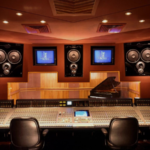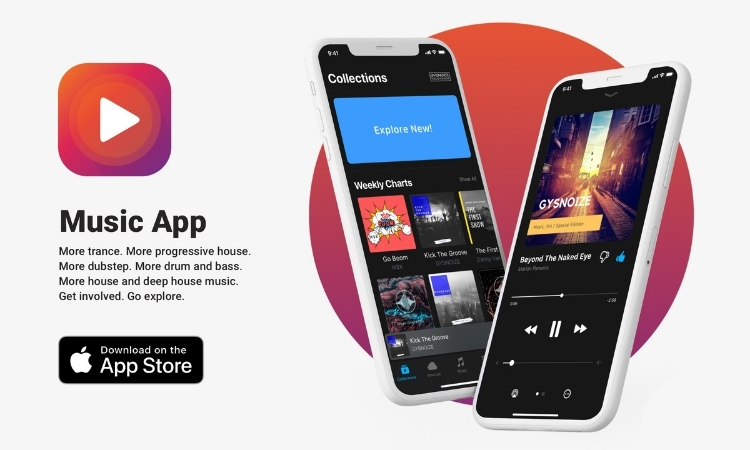Newly updated for 2019, we round up ten of the best studio monitors on the market, including options from Mackie, Genelec, Yamaha and Focal.
For anyone even remotely serious about music production, a decent pair of studio monitors is a must-have. Studio monitors are specialist loudspeakers, designed explicitly for production. They should exhibit flat frequency response, but even more importantly good monitors shouldn’t flatter your music; on the contrary, they should expose every last detail and allow you to focus in and analyse every element of the music.
These days, the vast majority of studio monitors (and all but one of the models on our list) are active designs, with amplifiers built into the speakers themselves. All that’s required is to connect to a line output from your mixer or audio interface. All of our choices are ‘nearfield’ monitors suitable for use in smaller rooms, where the listening position might be as low as one metre from the speakers.
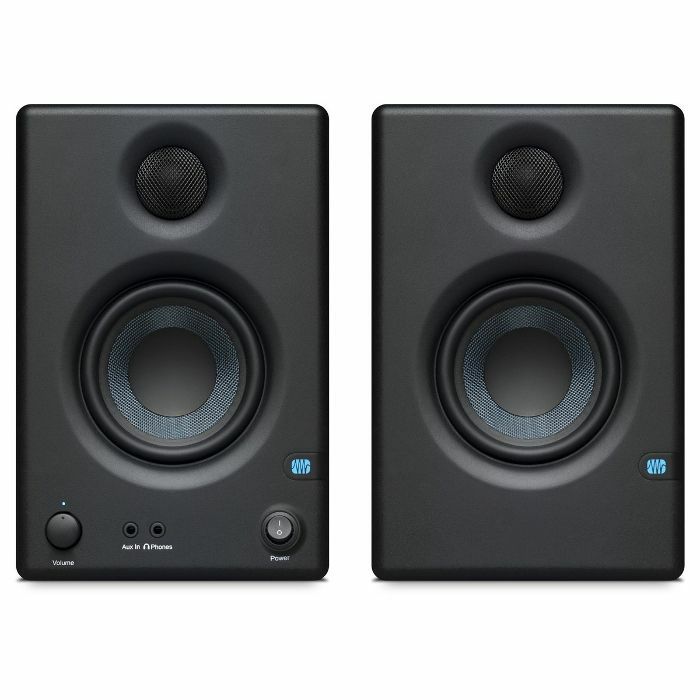
A relative newcomer to the studio monitor market, PreSonus’s debut came in 2013 with the release of the Eris E5 and E8 models, both of which immediately gained a reputation for offering exceptional value for money. Both have now been upgraded to improved XT models, but the range has also expanded downwards in the form of the Eris E3.5.
As the name suggests, the Eris 3.5 is a two-way design with a 3.5-inch woofer, which might seem too small to offer sufficient low end – especially for bass-heavy dance music – but the Eris does a respectable job, offering a frequency response that extends down to 80 Hz before rolling off. While it’s impossible for a driver of this size to match the punch and depth of a larger cone, the Eris 3.5 provides just about enough bass clarity to give an overall impression of your low-end mix.
There was a time not so long ago when studio monitors at these very low price points would be bordering on unusable, but the Eris range proves that it’s now more than possible to buy clear and surprisingly accurate entry-level monitors. They’re definitely not the last word in sonic accuracy, of course, but for a tiny, affordable option they’re more than capable.

Mackie are a long-established name in the studio monitor game, and the MR524 is a prime example why, offering a 5-inch two-way design at a very attractive price point. The MR range is a more affordable series than the company’s long-running HR models, which have been on sale since 1997. As you’d expect, the technology and overall approach is similar, so the 524 represents a budget take on the design philosophy you’d find in more expensive Mackie models like the HR624 MK2, which comes in at nearly five times the price per speaker.
In terms of the tech employed, the key selling point is the use of Mackie’s logarithmic waveguides in the front baffles, which disperse the high frequencies in order to provide a more even off-axis response, broadening the sweet spot in which the sound remains accurate and even. In practice, that’s a particular bonus when moving around the main listening position to work with hardware, whether leaning across to play a synth or adjusting settings on a rack of outboard gear.
With bass extension down to 57 Hz, the Mackies also do a great job of presenting the weight and heft of low-end sounds like kick drums and basslines. Overall, an impressively good all-round performer at a low price.

Now into their fourth generation, KRK’s Rokit series are firm favourites in the midrange category, where you can expect good sound quality (if not quite pro-level) at relatively affordable prices. This section of the market represents good value for home producers, particularly in the medium-sized speakers that tend to work best in smaller spaces such as bedroom studios.
The RP7 is the 7-inch Rokit option in a range that extends down to 5-inch RP5s and the hefty three-way RP10-3s with a 10-inch bass driver. The 7-inch or 8-inch versions would be our pick for most home studios, offering a nice balance for smaller rooms. In practice, the 10-inch versions sound impressive but can sometimes be a bit overpowering in smaller rooms, reducing their accuracy and trustworthiness for monitoring applications.
The main criticism of the Rokit range is usually that it can be a little too flattering of bad mixes. While that’s possibly true, the flipside is that they do sound engaging, whereas some monitors can be a bit sterile. It’s a compromise, but one that lots of Rokit users think is worth it.

Another of the longer-established names on our list, JBL was established in Los Angeles in 1946, with the company’s founder, James Bullough Lansing, already boasting two decades of experience in the nascent pro audio industry via his former company, Altec Lansing. As early as the 1960s, the JBL 4320 established itself as one of the most widely used recording studio monitors, developed for Capitol Records and adopted as a standard by EMI.
In recent years, the company has refreshed and expanded its range of affordable monitors, including this, the second-generation version of the two-way, 6.5-inch LSR306P. It’s a conventional formula, each speaker bi-amped (i.e. a separate amp for each driver) with JBL’s own Class D amplifier circuits on board. As with most midrange speakers around this price point, you’ll find switches on the back panels to adjust high-frequency trim and what JBL call ‘boundary EQ’, filtering the high and low frequencies respectively to compensate for room acoustics and achieve a level frequency response at the listening position. Like the Mackies, the 306s also employ waveguides to expand the listening sweet spot.
At a similar price point to the Rokit 7s, there’s an obvious comparison to be made. The JBLs probably lean towards a slightly more analytical, less flattering sound. The choice between the two will largely come down to personal taste, but there are no wrong answers here. Both are more than capable of reproducing your tracks clearly – it’s just a question of which approach you prefer.

IK Multimedia have only been involved in the studio monitor business for a few years, but the company’s first few offerings have already made a significant impact. The Italian company’s product range is best described as eclectic, ranging from iPhone recording interfaces to analogue synths via microphones and MIDI controllers. If that jack-of-all-trades approach suggests that their monitors might be generic or half-hearted attempts, that couldn’t be further from the truth.
The iLoud Micros are a successor to the original iLoud, which was more of a portable Bluetooth speaker than a proper monitor. The Micros are tiny little things, around 18 x 13 cm when viewed from the front and weighing just 850 grams each. With a 3-inch bass driver, you’d be forgiven for assuming that their bass response would be lacking, but that’s not the case, with the bottom end extending down to an impressive 55 Hz. It doesn’t seem possible that a box this small should be able to produce such deep sound, but the Micros don’t sacrifice accuracy or stereo imaging for the sake of bass. They punch above their weight, making them a strong contender if you’re pushed for space.
We’d also strongly recommend considering the more expensive iLoud MTMs, which are a similar design but offer built-in acoustic room correction using a bundled measurement microphone. This shouldn’t necessarily be taken as a substitute for proper acoustic treatment, but it does help to compensate for uneven acoustics in awkward spaces.
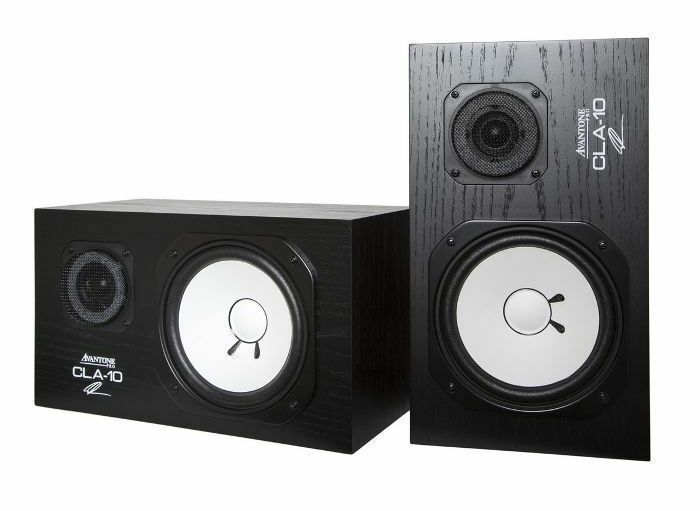
New York-based manufacturer Avantone specialises in affordable equipment inspired by older products from other companies. That’s not to say they produce outright clones as such, but most of their products are updated and improved versions of existing or defunct equipment (their other studio monitor offering is the MixCube, based on the 80s Auratone 5C Sound Cube). The CLA-10 is a collaborative effort with Grammy-winning mix engineer Chris Lord-Alge, inspired by his favoured Yamaha NS-10M monitors, which were a default choice for mixing from the 70s through to the 90s. Avantone initially developed the drivers as replacement options for owners of genuine NS-10s, then partnered with Lord-Alge to build a copycat box and crossover circuit around them.
Although the popularity of NS-10s has declined somewhat since their heyday, you’ll still find them in countless studios for their ability to expose the midrange of a mix (and that’s despite the fact their uneven frequency response makes a mockery of the idea that a good monitor should be flat). The CLA-10 is broadly similar to the original. It doesn’t sound identical to the NS-10, but the revealing midrange is very much in the same ballpark. There’s a little more high end, but it’s a speaker with an ability to illuminate a bad mix and push you in the right direction to fix it.
The cliche about the NS-10s is that they’re so unforgiving and harsh that if your mix sounds good on them it’ll sound good on anything. The same is broadly true of the CLA-10. They wouldn’t be our first recommendation to everyone, but if you’re looking for an unflattering view of your midrange (vocals, snares, synths…) then they’re worth considering.
(Note that the CLA-10 is also a passive speaker, just like the NS-10. That means you’ll need to use a separate amplifier, but it does allow you to experiment with different models to find a sound that works for you.)

The iconic white cones of Yamaha’s 1970s NS-10Ms quickly came to symbolise the very concept of a recording studio, so Yamaha can certainly be forgiven for resurrecting the appearance of the vintage models for their current monitor range. That being said, any similarities are purely cosmetic, with no particular connection in terms of technology or sound. There are some who would say that’s a shame (for whom the Avantones are probably the best choice), but to most people the more contemporary approach of the HS8 and the other models in the current Yamaha range will be more appealing.
The HS series are active two-way monitors with a relatively flat frequency response and an engaging, energetic sound. This HS8 model, equipped with an 8-inch bass driver, is the largest of three, with the HS5 (5-inch) and HS7 (6.5-inch) sitting below it in the range. There’s absolutely nothing unusual about the specification or design of the HS monitors, with a very conventional bass-reflex enclosure (i.e. a box with a port), dome tweeter and two-way bi-amped design. The result is a monitor with a clear top end, revealing mid range and precise bass response extending down to 47 Hz. The HS8 is a great all-rounder.

Finnish brand Genelec built their reputation on premium options for high-end studios, with their monitors become mainstays of pro recording facilities around the world. In recent years, the company has also expanded its range into more affordable territory, offering an increased number of smaller options for home studios, mobile use and desktop monitoring in programming rooms, video edit suites and similar locations where a full-size monitoring setup might not be necessary or practical.
The 8020D is a relatively humble model in the grand scheme of the brand’s product range – their top-end nearfield models reach well into the thousands of pounds – but it’s a good representation of what Genelec do well. As you’d expect at this price point, there’s a noticeable step up in clarity and accuracy through the midrange compared to a cheaper speaker like the Yamaha HS8. One of the trade-offs is the measured bass response, which rolls off from around 60 Hz, but it’s crucial to note that bass presentation is clear and accurate. It’s an important reminder to judge monitors by their sound and not how their specifications compare on paper. As a compact but professional-sounding monitor, the 8020 is a superb choice.

Founded in Paris in 1979, Focal have a proud history in various fields of audio. The brand’s product catalogue is diverse, including hi-fi speakers, studio monitors, headphones and even car audio products. The Shape range is specifically aimed at smaller rooms and home studios, sitting alongside the more conventional Alpha series in Focal’s range.
Focal have always been keen to showcase their forward-thinking approach, and that’s evident in the Shape 65’s use of unusual materials and elaborately named proprietary technology. You’ll find an M-shaped aluminium-magnesium alloy inverted dome tweeter and a flax sandwich cone woofer with TMD Tuned Mass Damper surround and NIC Neutral Induction Circuit magnet. It’s a slightly bewildering word salad, but what it means in practice is that the sound is ultra-revealing and forensically detailed.
The most unusual aspect of the Shape design is actually quite simple to understand, certainly in terms of its contribution to the sound. On each side of the speaker cabinet you’ll find a ‘passive radiator’, which is similar to a speaker cone but without a magnet driving it. The radiator is designed to move with the air pressure inside the cabinet, allowing the speaker to reproduce deeper bass notes than it would otherwise be able to achieve. As such, the bass response is flat down to a truly impressive 40 Hz, making the Shape 65s a seriously weighty and accurate choice even in smaller studio spaces.
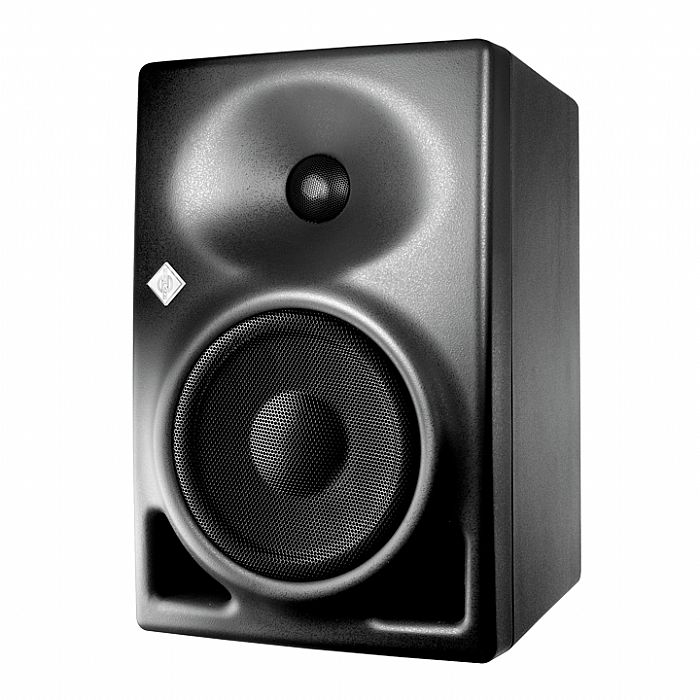
Our final pick, the Neumann KH120A, is another model which can trace its lineage back a long way. The KH in the name is a reference to Klein + Hummel, an iconic German brand incorporated into Neumann by parent company Sennheiser in 2009. The KH120A is loosely based on the old Klein + Hummel O100 model, resulting in a two-way design with a 5.25-inch bass driver and waveguide-assisted titanium-fabric tweeter.
You tend to get what you pay for with speakers. Each step up to a new price point reveals additional benefits in terms of clarity of presentation, neutrality and accuracy. Perhaps most of all, the Neumanns demonstrate just how analytical a studio monitor at this higher price level can be, allowing you to hone in on tiny details when designing sounds or mixing a track. While the KH120s can’t quite match the remarkable low-end extension of the Focals above, they’re more than capable in that area too.
Source:
